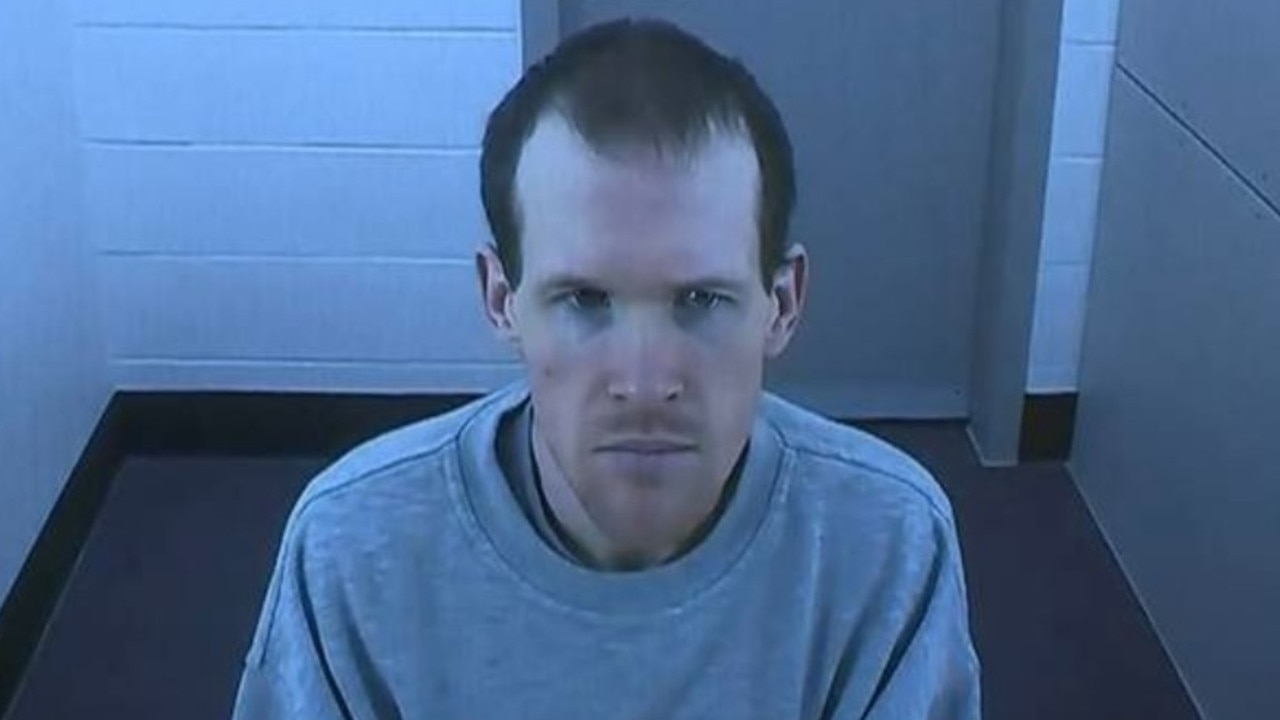Christchurch attack: No live reporting of Brenton Tarrant sentencing permitted
When Christchurch mass shooter Brenton Tarrant is sentenced tomorrow, he will be unable to use the hearing to spread his far-right ideology.
When Christchurch mass shooter Brenton Tarrant is sentenced tomorrow, strict measures will be in place to prevent the Australian far-right terrorist from using the hearing as one last opportunity to spread his hateful ideology.
The 29-year-old pleaded guilty in March to 51 counts of murder, 40 counts of attempted murder and one count of committing a terrorist act over his attacks on two mosques in March 2019 that were live-streamed on Facebook.
The sickening attack remains the worst mass shooting event in New Zealand’s history.
Tarrant, originally from Grafton, NSW, sacked his legal team last month and intends to represent himself at his sentencing, which starts on Monday in the Christchurch High Court and is expected to last three days.
Earlier this month, High Court Justice Cameron Mander warned that there would be no live reporting of the sentencing hearing permitted.
This applies to both to media or anyone observing the proceedings, whether in the courtroom or remotely online.
RELATED: Christchurch massacre victims in isolation ahead of sentence
RELATED: Brenton Tarrant sacks legal team and will represent himself

While dozens of victims have travelled back to New Zealand for the sentencing from countries including the UK, Turkey, Jordan, Bangladesh, Pakistan, Fiji, Egypt, Singapore and Australia, the COVID-19 pandemic means many are unable to attend in person.
“The number of people directly impacted by the events of March 15, 2019 number in the hundreds – those whose lives were affected in some way number in the thousands,” Justice Mander said.
“Provision is being made for victims and their families who are unable to attend court in person to view the hearing remotely.”
Reporting will only be allowed during the midday adjournment and at the end of each sitting day.
Before each adjournment the judge will outline whether any restrictions apply to what can be published or broadcast from the session.
Justice Mander outlined two main reasons for the prohibition.
Firstly, to minimise the potential re-traumatisation of the victims and their families while reading their victim impact statements, which will form a “significant part” of the hearing.
Fifty-four victims have so far indicated they wish to read victim impact statements.
Under New Zealand law the identities of complainants and witnesses under the age of 18 are automatically suppressed.
RELATED: Australian terrorist pleads guilty to Christchurch mosque attacks
RELATED: Comedian sparks online debate after joking about massacre

The Court, he noted, also has discretionary powers to prohibit the publication and distribution of victim impact statements if it considers this may be necessary to protect the victim’s “physical safety or security, emotional welfare and privacy”.
“Media should also be aware that the classification of the defendant’s manifesto and video recordings of the mosque shootings as objectionable publications under the Films, Videos, and Publications Classification Act 1993 remain in place,” he said.
“Any republication of this content is prohibited and constitutes an offence.”
The other main reason relates to upholding the “dignity of the court”.
“The Court may also be obliged to prevent the wider dissemination of harmful material and under a duty to prevent its own processes from being used for ulterior purposes,” Justice Mander said.
“The Court … has a duty, particularly in the context of offending against the Terrorism Suppression Act, to ensure it is not used as a platform and is obliged, to the extent possible, to prevent it being used as a vehicle to cause further harm.”
Justice Mander added: “Taken together, these concerns suggest the need for a precautionary approach. The following orders reflect that caution.”
The only footage and recordings from the hearings that will be provided to media under a pool arrangement will be the opening of the hearing, with Tarrant in the dock, the reading of the summary of facts, the presentation of submissions and the delivery of the sentence.




